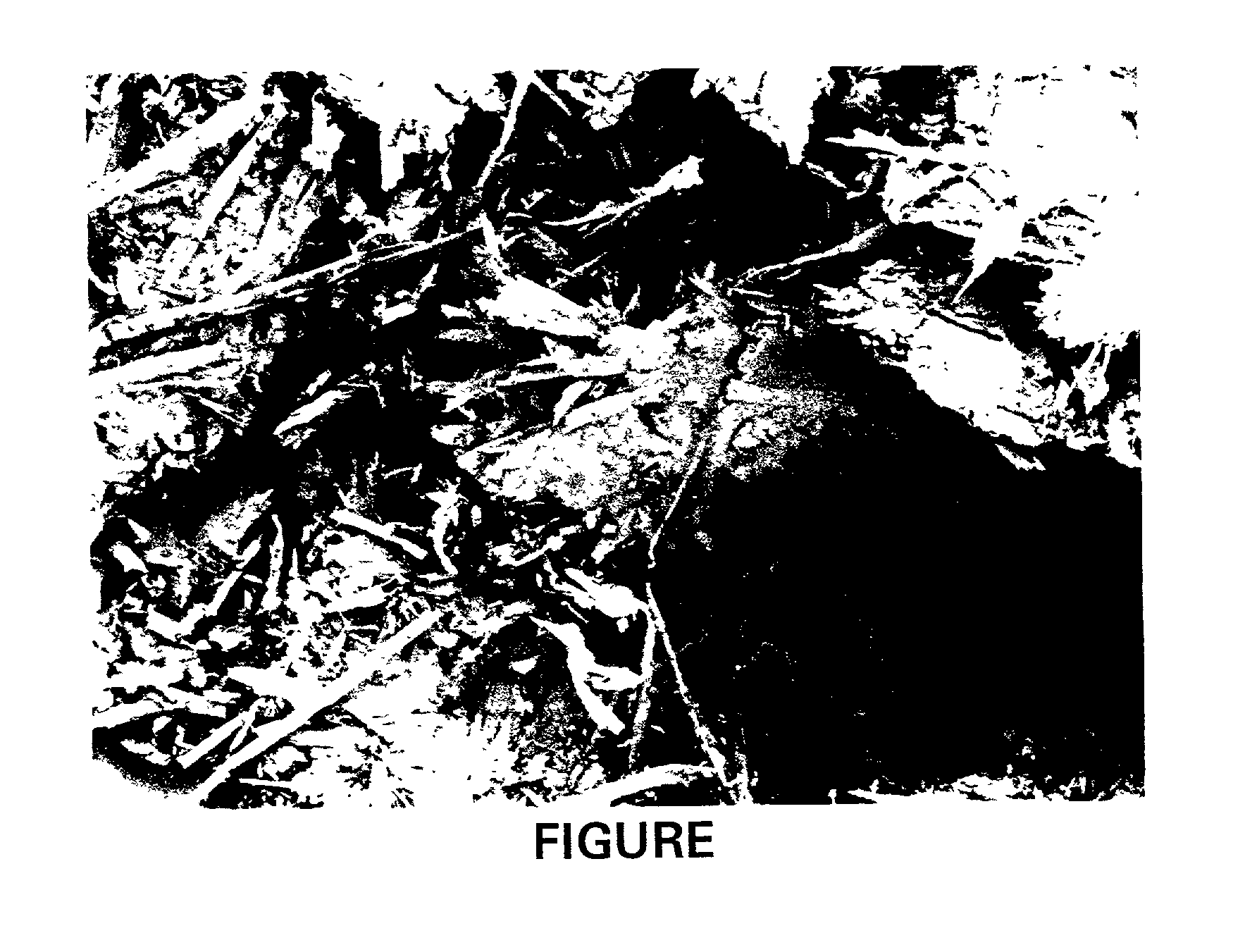Cellulosic and lignocellulosic materials and compositions and composites made therefrom
a technology of applied in the field of texturized cellulosic or lignocellulosic materials and compositions and composites, can solve the problem of ever-increasing amount of waste cellulosic and lignocellulosic materials
- Summary
- Abstract
- Description
- Claims
- Application Information
AI Technical Summary
Problems solved by technology
Method used
Image
Examples
example 1
[0057] A 1500 pound skid of virgin, half-gallon juice cartons made of polycoated white kraft board was obtained from International Paper. Each carton was folded flat.
[0058] The cartons were fed into a 3 hp Flinch Baugh shredder at a rate of approximately 15 to 20 pounds per hour. The shredder was equipped with two rotary blades, each 12" in length, two fixed blades, and a 0.3" discharge screen. The gap between the rotary and fixed blades was 0.10".
[0059] The output from the shredder, consisting primarily of confetti-like pieces, about 0.1" to 0.5" in width and about 0.25" to 1" in length, was then fed into a Thomas Wiley Mill Model 2D5 rotary cutter. The rotary cutter had four rotary blades, four fixed blades, and a 2 mm discharge screen. Each blade was approximately 2" long. The blade gap was set at 0.020".
[0060] The rotary cutter sheared the confetti-like pieces across the knife edges, tearing the pieces apart and releasing a finely texturized fiber at a rate of about one pound pe...
example 2
[0061] Composites of texturized fiber and resin were prepared as follows. A standard rubber / plastic compounding 2-roll mill was heated to 325-400.degree. F. The resin (usually in the form of pellets or granules) was added to the heated roll mill. After about 5 to 10 minutes, the resin banded on the rolls (i.e., it melted and fused on the rolls). The coupling agent was then added to the roll mill. After another five minutes, the texturized cellulosic or lignocellulosic material was added to the molten resin / coupling agent mixture. The cellulosic or lignocellulosic fiber was added over a period of about 10 minutes.
[0062] The composite was then removed from the roll mill, cut into sheets, and allowed to cool to room temperature. Batches of about 80 g each were compression molded into 6".times.6".times.1 / 8" plaques using standard compression molding techniques.
[0063] One composition contained the following ingredients:
1 Composition No. 1 Ingredient Amount (g) High density polyethylene.s...
PUM
| Property | Measurement | Unit |
|---|---|---|
| Fraction | aaaaa | aaaaa |
| Fraction | aaaaa | aaaaa |
| Fraction | aaaaa | aaaaa |
Abstract
Description
Claims
Application Information
 Login to View More
Login to View More - Generate Ideas
- Intellectual Property
- Life Sciences
- Materials
- Tech Scout
- Unparalleled Data Quality
- Higher Quality Content
- 60% Fewer Hallucinations
Browse by: Latest US Patents, China's latest patents, Technical Efficacy Thesaurus, Application Domain, Technology Topic, Popular Technical Reports.
© 2025 PatSnap. All rights reserved.Legal|Privacy policy|Modern Slavery Act Transparency Statement|Sitemap|About US| Contact US: help@patsnap.com

